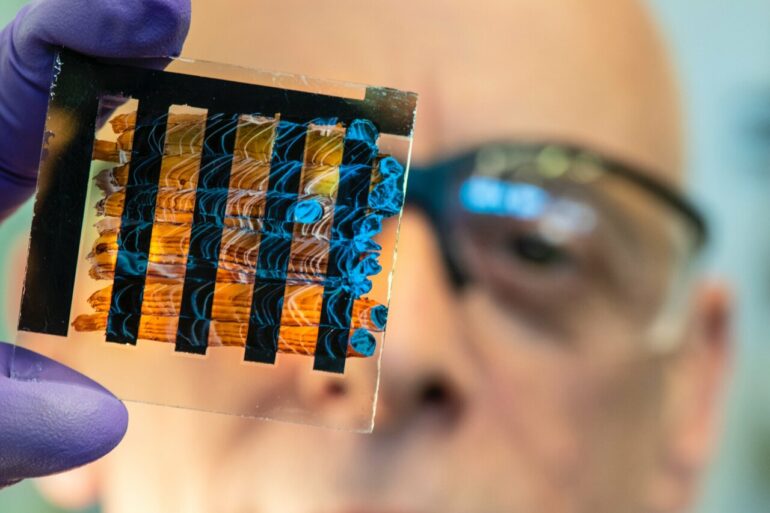Perovskites are hybrid materials made from metal halides and organic compounds. They have attracted a lot of interest in the field of solar energy because of their light-harvesting capacities combined with a low cost of manufacturing, making them prime candidates to overtake the market from their silicon counterparts. Perovskites also show great potential in a range of applications that include LED lights, lasers and photodetectors.
One of the obstacles on the way to commercializing perovskite solar cells is that scaling them up results in losses of power-conversion efficiency and operational stability. This is due to natural defects in the perovskite molecular structure, which interferes with the flow of electrons. This results in “resistive loss”—a power loss due to resistance. In addition, the processes required to achieve high-quality large-area perovskite films are quite complex.
In a new study published in Nature Nanotechnology, scientists led by Mohammad Nazeeruddin at École polytechnique fédérale de Lausanne (EPFL) have found a way to overcome the scaling up problems of perovskites. The scientists have developed an easy solvothermal method to produce single-crystalline titanium dioxide rhombohedral nanoparticles that can be used to build a perovskite film.
The new structure features a lower amount of “lattice” mismatches, referring to the “ladder-like” structure of the titanium dioxide nanoparticles. This translates into a lower number of defects, which ensures better electron flow throughout with lower power loss.
Testing the new nanoparticle-based, small-size solar cells, the scientists achieved a power-conversion efficiency of 24.05% and a fill factor (a measure of actual obtainable power) of 84.7%. The cells also maintain about 90% of their initial performance after continuous operation for 1400 hours.
The scientists also fabricated large-area cells, which certified an efficiency of 22.72% with an active area of nearly 24 cm2. This “represents the highest efficiency modules with the lowest loss in efficiency when scaling up,” conclude the authors.
More information:
Yong Ding et al, Single-crystalline TiO2 nanoparticles for stable and efficient perovskite modules, Nature Nanotechnology (2022). DOI: 10.1038/s41565-022-01108-1
Provided by
Ecole Polytechnique Federale de Lausanne
Citation:
A solution to perovskite solar cell scalability problems (2022, April 21)
